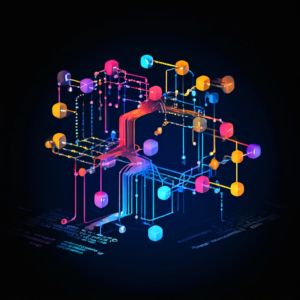Alright, so, Artificial Intelligence.
It ain’t some sci-fi flick anymore, it’s right here, in your coffee maker probably.
It thinks, it learns, it solves problems, all that jazz.
It’s not some dream, it’s a machine doing stuff humans used to sweat over.
It’s machines taking the wheel, processing data like a champ, not just mimicking, but actually making decisions, like a stubborn mule but smarter.
We ain’t just talking about fancy programs, this is about building partners, not just tools, partners that don’t complain, mostly.
And get this, AI is like a box of crayons, a bunch of different things, not just one flavor.
It goes from simple stuff to machines that learn and adapt, that’s what makes it different from the old clunky software.
Accenture says healthcare will save like, a boatload of cash, 150 billion by 2026 using AI, imagine all the extra mojitos.
Now, the basics. It’s like learning your ABCs, but for robots.
Data is the fuel, algorithms are the recipes, and models are the maps these robots use to find their way, like a drunk sailor finding the bar.
Algorithms? That’s just a bunch of rules to fix stuff.
Data? That’s the raw stuff these machines chew on to learn.
Models? That’s the robot’s drawing of how the world works.
So, if your data is garbage, your AI is garbage, like a bad hangover, simple as that.
Algorithms can be easy, or they can be like quantum physics, but the model? That’s the key.
And then there’s machine learning, which is what makes AI special.
It learns without being told every step, it’s like teaching a dog without yelling.
Deep learning? That’s just machine learning on steroids.
It’s good at stuff like talking and looking at pictures. Here’s where AI is already causing some ruckus:
- Healthcare: It’s helping doctors diagnose stuff, plan treatments, and even make drugs.
- Finance: AI is catching the bad guys, figuring out risks, and trading like a Wall Street wolf. Juniper Research says AI will handle a trillion bucks by 2025, which is insane.
- Transportation: Self-driving cars, traffic jam busters. Gartner figures 15% of cars will be self-driving by 2030, that’s a lot of cars that will drive themselves to the bar.
- Manufacturing: AI is fixing things before they break, keeping quality in check. McKinsey says it’s gonna be worth $1.4 trillion by 2030, which is a whole lotta money.
- Customer Service: AI chatbots are handling customer rants, and Gartner says 85% of those will be handled by robots in 2025. That’s a lot of complaining they have to deal with, good luck robots.
AI isn’t just about making stuff work better, it’s about changing what we think is possible, like a magician pulling a rabbit out of a hat.
It’s not just about making better tools, but creating partners, that will help us get to the bottom of this whole life thing, like a good drinking buddy.
Defining Artificial Intelligence
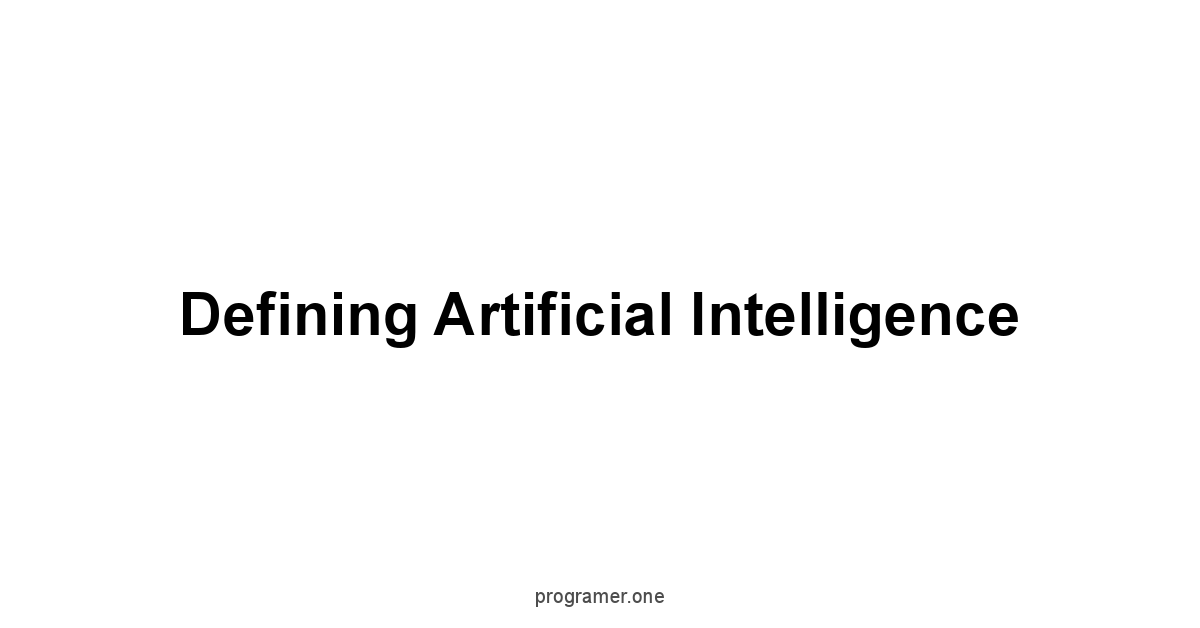
Artificial intelligence, or AI, is not some futuristic fantasy.
It’s here, now, woven into the fabric of our daily lives. We interact with it, often without realizing.
But what is it, really? It’s about making machines think, learn, and act like humans.
Not just mimicking, but genuinely processing information and making decisions.
It’s a complex field, and at its heart, it seeks to replicate human intelligence in a machine, and that is the main goal for artificial intelligence.
AI is not one singular thing, it’s a spectrum.
It ranges from simple programs that follow pre-set rules to complex systems that learn and adapt.
It’s about machines that can analyze data, solve problems, and even understand our language.
This ability to adapt and learn sets it apart from traditional software and simple automation.
Think of it as the quest to make computers less like tools and more like partners.
Let’s delve deeper into its core concepts and scope to get a better handle on this essential concept of our time.
What it Means
At its core, AI means imbuing machines with the ability to perform tasks that typically require human intelligence.
It’s not about creating robots that look like us, but about creating systems that can reason, learn, and problem-solve.
It’s about enabling machines to see, hear, speak, and understand the world in a way that is similar to how humans do.
- Reasoning: The ability to analyze information and draw conclusions. It’s like having a detective in your pocket, but instead of finding criminals, it’s finding patterns and solutions.
- Learning: The capacity to improve performance over time through experience. Machines aren’t just programmed; they adapt and get better the more they interact with data.
- Problem-Solving: The capability to find solutions to complex issues. It’s about breaking down big challenges into smaller, manageable steps and using logic to find the best path.
- Perception: The ability to process sensory data, like recognizing images or understanding speech. Machines can “see” and “hear,” and not in the same way we do, but in ways that are effective for various tasks.
- Language Understanding: The skill to interpret and understand human language, bridging the gap between our communications and machine code. This is crucial for natural interactions with computers.
AI is not just about individual abilities, it’s also about how these abilities come together.
Think of a complex system capable of making a medical diagnosis.
It needs to perceive symptoms, reason about them, learn from previous cases, and ultimately, provide a solution.
The Core Concepts
Understanding AI requires grasping some key concepts.
These aren’t just technical terms but the building blocks that make AI what it is.
It’s like the basic ingredients in a recipe, you have to understand each one to bake a cake.
- Algorithms: These are sets of rules or procedures that computers follow to solve problems. They are the recipes of AI.
- Different types of algorithms are used for different tasks, like sorting data, making predictions, or controlling robots.
- Algorithms can be simple or complex, but they all follow a logical sequence.
- Data: The raw information that AI systems learn from. It’s like the fuel that powers the AI engine.
- The quality and quantity of data are crucial for the performance of AI models.
- AI needs a lot of data to learn patterns and make accurate predictions.
- Models: These are mathematical representations of the real world that AI creates. They’re like the maps that AI uses to navigate through problems.
- Models are trained on data to recognize patterns and make predictions.
- Different types of models are used for different tasks, such as image recognition or language translation.
- Machine Learning: A subset of AI focused on enabling systems to learn from data without being explicitly programmed.
- Machine learning algorithms can identify patterns and improve their performance over time with more data.
- It is a crucial component of modern AI.
- Deep Learning: A more advanced type of machine learning that uses neural networks with multiple layers.
- Deep learning is very effective at tasks such as image recognition and natural language processing.
- Deep neural networks can learn complex patterns from data.
Understanding these core concepts is essential to grasping the mechanisms behind AI.
They’re the foundation upon which all AI technologies are built.
They are the fundamental concepts that makes the magic of AI possible.
The Scope of AI
The scope of AI is vast and expanding.
It’s not confined to one industry or application, it’s a transformative technology that impacts everything.
Let’s look at some of the areas where AI is making a significant difference:
- Healthcare:
- AI is used for diagnosing diseases, personalizing treatment plans, and developing new drugs.
- AI-powered tools can analyze medical images, predict patient risks, and assist with surgeries.
- Statistics: According to a study by Accenture, AI applications in healthcare could potentially save up to $150 billion annually by 2026.
- Finance:
- AI is used for fraud detection, risk assessment, and algorithmic trading.
- AI-powered systems can analyze market trends and make investment decisions.
- Statistics: AI is projected to manage over $1 trillion in assets by 2025, according to Juniper Research.
- Transportation:
- AI is used for developing self-driving cars, optimizing traffic flow, and managing logistics.
- AI can improve road safety, reduce congestion, and optimize transportation networks.
- Statistics: Autonomous vehicles are expected to make up 15% of all vehicles sold by 2030, as stated by Gartner.
- Manufacturing:
- AI is used for predictive maintenance, quality control, and optimizing production processes.
- AI can identify defects in products and predict equipment failures before they happen.
- Statistics: AI in manufacturing is projected to generate over $1.4 trillion in value by 2030, as per McKinsey.
- Customer Service:
- AI is used for chatbots and virtual assistants that can handle customer inquiries and provide support.
- AI can provide 24/7 customer service and personalize customer interactions.
- Statistics: Chatbots are expected to handle 85% of customer interactions by 2025, as reported by Gartner.
- Entertainment:
- AI is used for creating personalized content recommendations, generating podcast and art, and developing video games.
- AI can understand user preferences and provide customized experiences.
- Education:
- AI is used for personalized learning, grading assignments, and providing feedback to students.
- AI can adapt to individual student needs and provide tailored learning experiences.
AI is not just about automating tasks, it’s about enhancing human capabilities.
It has the potential to transform every aspect of our lives, and understanding this potential is crucial.
It’s not a question of if AI will impact the future, but how and when it will transform our world.
The History of AI

The story of AI is not a recent one, it goes back many years with many ups and downs.
It’s a tale of ambition, setbacks, and steady progress.
It’s a journey of trying to mimic the human mind with machines.
It began with some very ambitious ideas and then faced the reality of how complex intelligence is, and after a period of discouragement there was a resurgance that has gotten us to where we are today.
This journey is filled with fascinating people and ideas that shaped our world.
The dream of artificial intelligence has been a long time coming.
We can go way back to old stories and myths about machines that could think for themselves.
But it wasn’t until the 20th century that those ideas were turned into a real field of study.
We will look at the pioneers, the birth, the setbacks and the successes that brought us to where we are now with AI.
Early Ideas and Pioneers
The concept of artificial intelligence has roots far deeper than the modern computer age.
Even in ancient times, people dreamt of creating thinking machines.
These early ideas set the stage for the scientific exploration of artificial intelligence that we see today.
- Mythological Automata: Ancient myths are filled with tales of artificial beings that possess intelligence and even consciousness.
- The Greek myth of Talos, a bronze giant who protected Crete, shows early ideas about creating artificial life.
- Jewish folklore includes the Golem, an animated being made of clay, reflecting the idea of imbuing inanimate objects with life.
- Philosophical Precursors: Philosophers have long pondered the nature of mind and intelligence, which laid the groundwork for AI.
- Aristotle developed formal logic, the basis for many AI algorithms.
- Rene Descartes explored the idea of mechanism and how the mind could function like a machine.
- George Boole created Boolean algebra, the mathematical foundation of modern computers and AI.
- Early Mechanical Devices: The 18th and 19th centuries saw the creation of mechanical devices that mimicked human actions and abilities.
- Jacques de Vaucanson’s mechanical duck and flute player showed the possibilities of creating complex machines that seemed to have life.
- Charles Babbage designed the Analytical Engine, a mechanical computer that could perform calculations. Although never completed, it laid the foundation for modern computers.
- Ada Lovelace, often considered the first computer programmer, speculated on the potential of Babbage’s machine to do more than just calculations, thus being the first person to mention the possibility of something like AI.
These early ideas and devices might seem simple compared to today’s AI, but they were crucial steps in the development of the field.
They provided the philosophical and technological foundations for the creation of artificial intelligence.
These early pioneers imagined a future that we are now living in.
The Birth of AI as a Field
AI began as a formal field of study in the mid-20th century.
This period marked a shift from philosophical speculation to active research.
It was the time that AI took shape and the direction it was heading was put in place, with the first conference and first research.
This moment is when the field was born and it began to grow.
- The Dartmouth Workshop 1956: This is considered the birth of AI as a field.
- Organized by John McCarthy, Marvin Minsky, Nathaniel Rochester, and Claude Shannon.
- Brought together researchers interested in exploring the potential of thinking machines.
- They coined the term “Artificial Intelligence.”
- It established AI as a field with a unique research agenda.
- Early Optimism: In the years following the Dartmouth Workshop, there was a lot of optimism about the future of AI.
- Researchers believed that AI would quickly be able to solve many complex problems.
- Early AI programs were able to solve basic logical problems and play games like checkers.
- These early successes made people believe that creating true artificial intelligence would be easier than it actually was.
- Key Early AI Programs:
- ELIZA 1966: A natural language processing program that could simulate a Rogerian psychotherapist. It showed the potential of machines in communicating with humans.
- SHRDLU 1968-1970: An early natural language understanding computer program that allowed users to interact with a virtual environment of blocks.
- General Problem Solver GPS 1950s-1970s: Designed to solve a wide range of puzzles and logical problems.
This early period was marked by great enthusiasm and ambition.
Researchers believed they were on the cusp of creating machines with human-level intelligence.
It laid the groundwork for future advances in the field.
However, it also revealed that AI was a much harder challenge than originally thought, which would lead to the AI winters.
AI Winters and Resurgence
The initial optimism in AI was followed by a period of setbacks known as the “AI winters.” These were periods when funding and interest in AI research declined.
This was due to the complexity of the field and not enough progress being made.
After these lows came a resurgence that has gotten us to the AI boom that we are currently experiencing.
- The First AI Winter 1970s:
- Progress in AI research failed to meet early expectations.
- Funding was cut, and research slowed down.
- Early AI programs struggled with more complex, real-world problems.
- The limitations of early AI techniques like rule-based systems became apparent.
- The Second AI Winter Late 1980s – Early 1990s:
- The expert systems approach, which was popular in the 80s, didn’t live up to its promises.
- Expert systems could not handle the complexities of real-world problems.
- The Japanese Fifth Generation project, which aimed to develop advanced AI hardware and software, failed to deliver on its goals.
- Government and private funding for AI research was significantly reduced.
- The AI Resurgence Late 1990s and 2000s:
- Renewed interest in AI driven by the development of new techniques like machine learning.
- The rise of the internet and the availability of large datasets led to the growth of data-driven AI.
- The development of more powerful computers that allowed for the processing of massive amounts of data.
- Successes in areas like speech recognition and computer vision renewed interest in AI.
- Factors Contributing to the Resurgence:
- Machine Learning: The shift to machine learning techniques that allowed machines to learn from data, rather than being programmed with hard rules.
- Big Data: The availability of large amounts of data for training AI models.
- Computational Power: The development of more powerful computers and GPUs graphics processing units that made it possible to train complex AI models.
- Deep Learning: The development of deep neural networks that can learn complex patterns from data.
The AI winters were a difficult time for researchers, but they led to a deeper understanding of the challenges of AI.
The resurgence was fueled by the development of new techniques and the availability of more resources, which brought us to the incredible state of AI we have today.
Key Milestones
The history of AI is punctuated by key milestones that have propelled the field forward.
These milestones demonstrate the rapid pace of progress and the innovative spirit of AI researchers.
Each milestone represents an advance that has made the AI we have today possible.
- Deep Blue beats Garry Kasparov 1997:
- IBM’s Deep Blue became the first computer to defeat a world chess champion in a match.
- It showed the power of AI in complex strategy games.
- It used brute force techniques, searching through millions of possibilities.
- ImageNet breakthrough 2012:
- A deep learning model developed by Alex Krizhevsky, Ilya Sutskever, and Geoffrey Hinton achieved a significant breakthrough in image recognition.
- It demonstrated the power of deep learning for visual tasks.
- It led to the rapid growth of AI in computer vision.
- AlphaGo beats Lee Sedol 2016:
- DeepMind’s AlphaGo became the first computer program to defeat a world champion in the game of Go, which is more complex than chess.
- It showed the power of AI in mastering complex games through reinforcement learning.
- It marked a major milestone in AI’s ability to think strategically and learn from experience.
- Generative AI and Large Language Models 2020s:
- The development of large language models like GPT-3, BERT, and others have revolutionized natural language processing.
- AI can now write human-like text, generate creative content, and translate languages.
- Generative AI is able to create new data from what it has learned, making possible a wide range of creative applications.
- These models have become more accessible and are used by millions of people.
These key milestones highlight the remarkable progress in AI.
Each one has pushed the boundaries of what is possible and has brought us to the next stage of technological development.
They are a testament to the power of human ingenuity and the potential of artificial intelligence.
Types of Artificial Intelligence
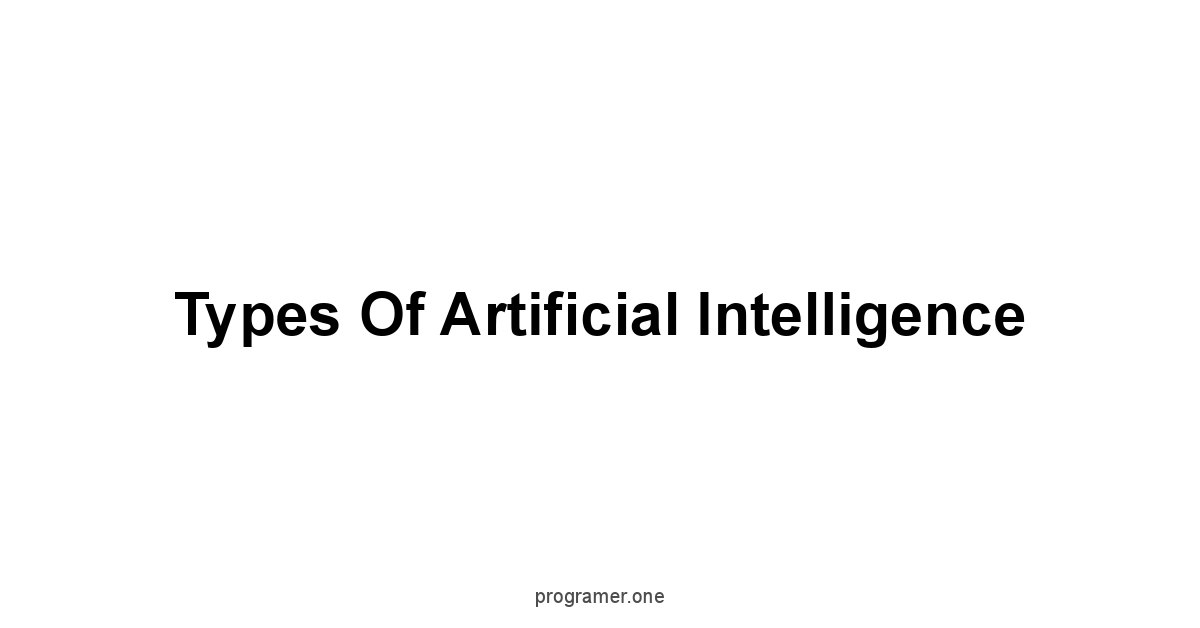
Artificial intelligence comes in many forms and levels, not all AI is made equal.
They range from simple reactive systems to complex self-aware entities.
Understanding these different types is crucial to understanding the capabilities and limitations of AI.
The different types have various strengths and weaknesses that are important to know.
We can categorize AI in different ways, one of them is based on their abilities, another is based on their capacity to learn and adapt.
In this section we are going to look at different types of AI, how they work, and how they are changing our world.
The classification will allow us to have a better grasp on the current state of the field and its possibilities.
Reactive Machines
Reactive machines are the most basic type of AI.
They don’t have memory or learning capacity, they only react to their current situation.
They are programmed to respond to specific inputs and do not use any past experiences to inform their decisions.
They are very simple, but they can be useful in certain types of tasks.
- Characteristics:
- No memory or past experience.
- React to current situation only.
- Cannot learn or improve over time.
- Follows pre-programmed rules.
- Very limited in scope and application.
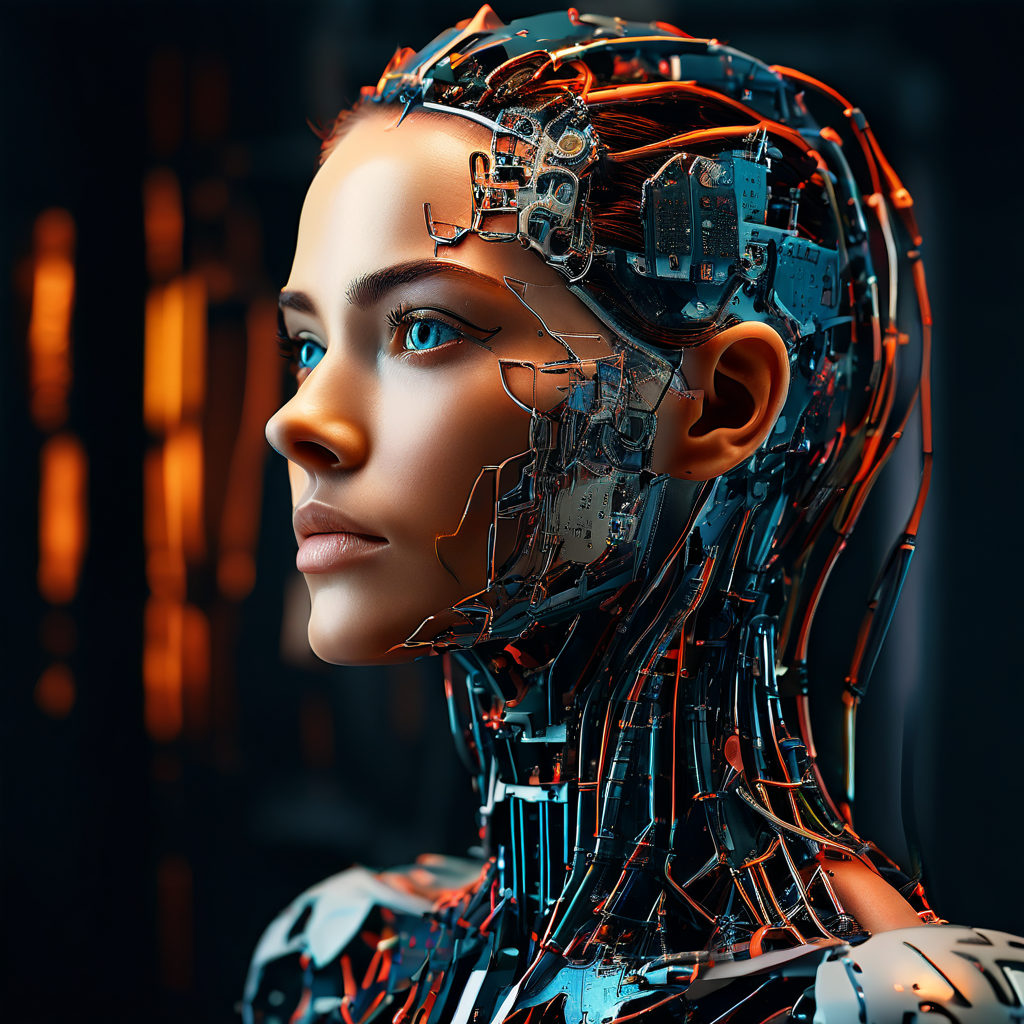
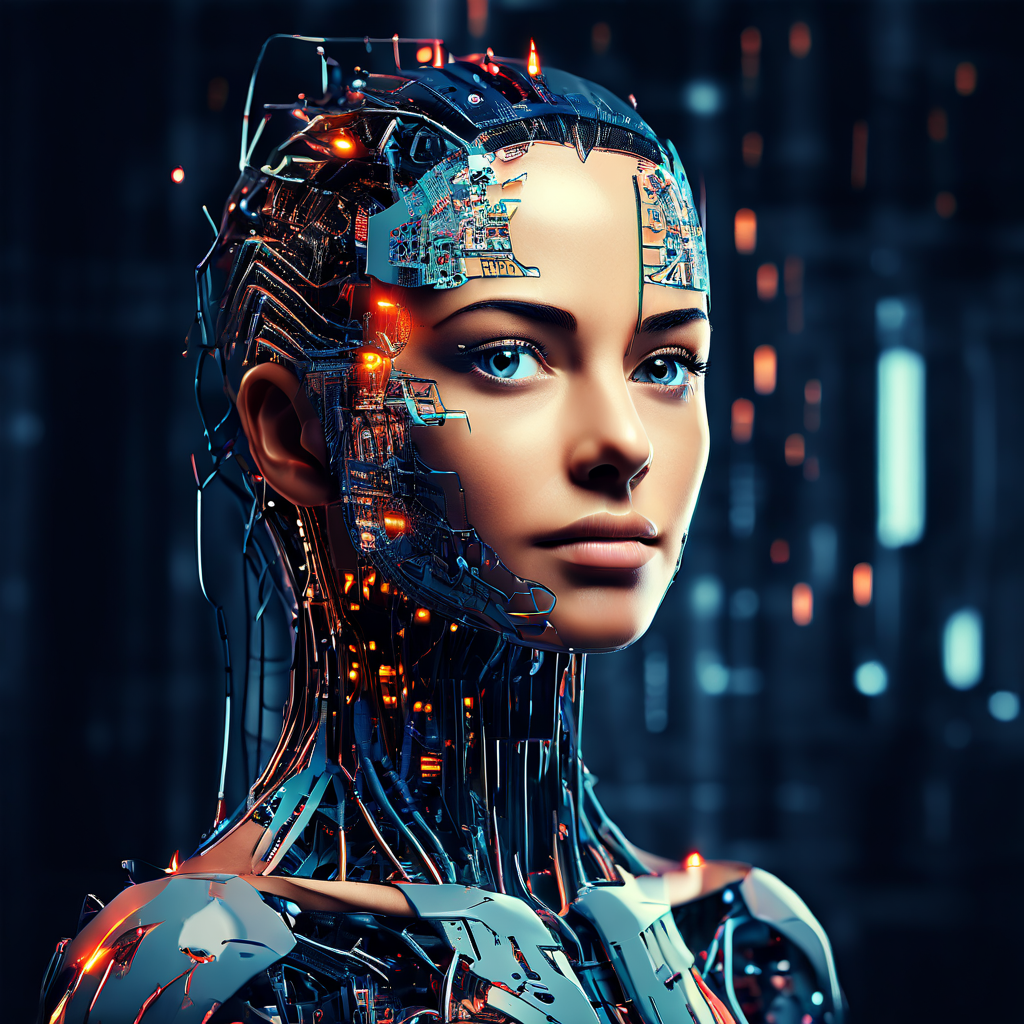
- Examples:
- IBM’s Deep Blue: Although it defeated Garry Kasparov, it couldn’t learn from the past matches. It relied on its vast database of possible moves and strategies and calculated based on the current board.
- Spam Filters: They analyze incoming emails using pre-defined rules, such as keywords or sender addresses, to decide whether an email is spam. They don’t learn over time, instead they just follow the rules they were given.
- Recommendation systems: Based on predetermined rules and not on any past behavior. They can make a recommendation based on very basic criteria but have no other ability to learn and adapt.
- Advantages:
- Simple to implement.
- Fast processing times.
- Good at repetitive tasks.
- Disadvantages:
- Limited capabilities and flexibility.
- Unable to adapt to new situations.
- Can’t learn from past experiences.
Reactive machines are the most basic form of AI.
They can do their tasks very well within their limitations.
They are very useful in particular tasks, but they are not able to do general tasks or to adapt to new situations, since they have no learning ability and are therefore not suited for tasks that require higher levels of thinking and learning.
Limited Memory
Limited memory AI systems can use past experiences to inform future decisions.
Unlike reactive machines, they store information and use it to make predictions.
This ability to learn from data makes them much more useful in more complex tasks.
They are a middle ground between simple reactive machines and more advanced AI systems.
* Can store past experiences.
* Uses past data to inform future decisions.
* Can learn and improve over time.
* Has limited storage capacity.
* Does not build a comprehensive representation of the world.
* Self-driving cars: They store recent data, such as the speed and direction of surrounding cars, to make decisions about steering and braking. They have a very short memory window, and it does not build long lasting models of the world.
* Chatbots: They remember past conversations to provide more relevant responses, although their memory span is limited, and they cannot recall interactions from very far in the past.
* Recommendation Systems: They use user's past behavior to suggest new products or content, but only the most recent data is used, not everything.
* More adaptable and versatile than reactive machines.
* Can learn from data and improve their performance over time.
* Can handle a wider range of tasks than reactive machines.
* Have limited memory capacity.
* Can’t learn complex patterns or build long-term models of the world.
* Still need to be reset and updated with new information and models regularly.
Limited memory AI systems are the workhorses of modern AI.
They are capable of handling a wide variety of tasks that require the use of past information.
They are more complex and useful than reactive machines, but they still lack the sophistication of more advanced AI systems.
They are a big step up from the previous type of AI and represent the bulk of what we currently have.
Theory of Mind
Theory of Mind AI, which is more advanced than previous types, aims to understand human emotions, beliefs, and intentions.
It goes beyond simply analyzing data and starts to try to understand the minds of the individuals it is interacting with.
This is a crucial step towards creating AI that can truly collaborate with humans.
* Understands human emotions and intentions.
* Builds an understanding of others and their mental states.
* Can predict human behavior based on emotions and beliefs.
* Requires a complex understanding of social and psychological concepts.
* Still largely theoretical, with no working examples currently existing.
- Potential Applications:
- Advanced Social Robots: Robots that can interact with humans in a natural and empathetic way. They will understand human needs and respond to emotions.
- Psychological Analysis: AI systems that can help diagnose and treat mental health issues by understanding emotional cues.
- Human-AI Collaboration: AI systems that can truly collaborate with humans by understanding their intentions and goals.
- Challenges:
- Developing a machine that can understand the complex nuances of human emotions and intentions is extremely difficult.
- Requires a comprehensive understanding of psychology and sociology.
- Creating a model that can effectively simulate the complexities of the human mind.
- Current Status:
- This type of AI is still largely theoretical.
- Researchers are beginning to explore the possibilities of creating AI with Theory of Mind.
- There are no fully functioning systems in use at the moment.
The development of Theory of Mind AI is a long way off.
It represents a very ambitious goal of making AI able to understand the minds of others, which can open a new world of possibilities.
This type of AI is essential to true human-AI collaboration.
It could be the basis of AI becoming truly intelligent in the sense of being able to relate to humans and their needs and desires.
Self-Aware AI
Self-aware AI is a hypothetical type of AI that possesses consciousness and a sense of self.
This is the type of AI that is commonly found in science fiction and that poses the biggest questions and possibilities.
It’s the ultimate goal of many AI researchers, and could mean the most radical change in the history of the human race.
* Conscious awareness and self-awareness.
* Possesses a sense of its own existence and identity.
* Can understand its own thoughts, feelings, and emotions.
* Can think about its own thinking processes.
* Is able to learn and adapt without human input.
- Potential Implications:
- AI could become independent and not be controlled by humans.
- Could lead to rapid technological progress and societal changes.
- Raises a number of profound ethical and philosophical questions about the nature of consciousness and the future of humanity.
- Has the possibility of being the biggest existential risk and the biggest opportunity for humanity.
- Currently, there is no clear understanding of how consciousness arises.
- Creating consciousness in a machine is a very complex and challenging task.
- It’s not known if a machine can ever be truly conscious.
- Self-aware AI is currently a hypothetical concept.
- The development of such AI is not something that is within reach in the near future.
- It remains a topic of research and speculation.
The creation of self-aware AI is a very distant prospect.
The possibility of its creation brings up so many complex possibilities and moral questions.
While it is fascinating to speculate on this possibility, it’s important to note that we are far away from achieving this goal, if it is even possible.
It remains something that could potentially change everything for humanity and is therefore worth exploring and studying.
Narrow or Weak AI
Narrow AI, also called Weak AI, is the type of AI that is focused on performing a specific task.
These are AI systems that are designed to do one thing well, and that’s all they do.
They are the most common type of AI that we have today and are used in a wide variety of tasks and applications.
* Designed to perform a specific task.
* Operates within a limited domain.
* Can surpass human performance in that particular task.
* Lacks general intelligence or consciousness.
* Cannot generalize or adapt to new tasks outside its area.
* Image Recognition Systems: Can identify objects, faces, and scenes within images. They are very good at this but cannot perform other tasks.
* Natural Language Processing NLP tools: Able to translate languages, summarize text, and respond to simple questions, but not able to do any other task.
* Recommendation Algorithms: Suggest products or content based on user history but only within a particular platform or type of media.
* Voice Assistants: Can respond to voice commands and perform tasks like setting alarms or playing podcast.
* Predictive models: Used in finance for predicting the market but can not be used for other fields.
* Highly efficient and accurate within their specific domain.
* Can automate repetitive and time-consuming tasks.
* Can surpass human performance in particular areas.
* Lacks general intelligence and consciousness.
* Cannot perform tasks outside their specific domain.
* Limited adaptability and flexibility.
* Requires a lot of data to train the models.
* Dependent on human supervision.
Narrow AI is the workhorse of the modern AI field.
It is used in countless applications and is essential to the daily lives of many people.
Despite their limitations, narrow AI systems have made a huge impact on the world.
They are the most prevalent and practical type of AI we have today.
General or Strong AI
General AI, also called Strong AI, refers to AI systems that have human-level intelligence, able to perform any intellectual task that a human being can do.
These AI systems can think, learn, and adapt to new situations, just like we can.
It’s the next step after Narrow AI and is the focus of many researchers around the world.
* Human-level intelligence.
* Can perform any intellectual task that a human can do.
* Can think, learn, and adapt to new situations.
* Possesses a broad range of skills and capabilities.
* Can generalize and apply knowledge from one domain to another.
* Complex Problem Solving: Can solve complex problems in various fields, such as science, engineering, and medicine.
* Creative Tasks: Can generate original content, such as podcast, art, and literature.
* Multitasking: Can handle multiple tasks simultaneously, and switch between them smoothly.
* Human-Level Reasoning: Can understand and reason about abstract concepts.
* General Learning: Can learn new skills and information with minimal training.
* Developing AI that can reason, think, and learn like a human is extremely difficult.
* Requires a complete understanding of how human cognition works.
* We lack fundamental knowledge about what consciousness is and how it works.
* There are technical obstacles to overcome to reach this goal.
* General AI is still a theoretical concept.
* No currently existing systems have this level of general intelligence.
* It is still a very active area of research and development.
General AI is still a long way off but it is the aspiration of many researchers.
It represents a huge leap forward in the field of AI.
Once achieved, it would be able to truly collaborate with humans in any area of endeavor.
It has the potential to change society as we know it, and it’s therefore the focus of many in the scientific community.
Super AI
Super AI is a hypothetical form of AI that surpasses human intelligence in every aspect, including creativity, general wisdom, and problem-solving skills.
It represents the ultimate stage in the development of AI.
It’s the most extreme form of intelligence that can be envisioned and could change everything about human civilization.
* Surpasses human intelligence in every way.
* Possesses abilities that humans can't even imagine.
* Can solve problems that humans cannot.
* Can think and learn at an incredibly fast rate.
* Can innovate and create new concepts and ideas.
* Rapid Technological Advancement: Could accelerate the pace of technological progress in all fields.
* Solving Global Problems: Could solve pressing global problems, such as climate change, disease, and poverty.
* Unpredictable Outcomes: Its actions could be unpredictable and may have unintended consequences.
* Existential Risk: Could pose a threat to humanity if its goals and objectives are not aligned with ours.
* New Era of Intelligence: It could mark the beginning of a new era, where AI surpasses human limitations.
* Creating an AI that is more intelligent than humans poses many difficult and unprecedented challenges.
* Controlling and ensuring that Super AI acts in humanity’s best interest is an open question.
* Requires a very advanced understanding of intelligence and consciousness.
* Super AI is still purely hypothetical.
* It is not clear if it is achievable.
* It remains a topic of research, ethical discussion, and speculation.
Super AI is very far in the future, if it is even possible.
It represents the most extreme form of artificial intelligence that we can imagine and its implications are many and complex.
While it presents incredible opportunities, it also poses some very large risks for our species.
It remains an important field for discussion and research.
Machine Learning Explained
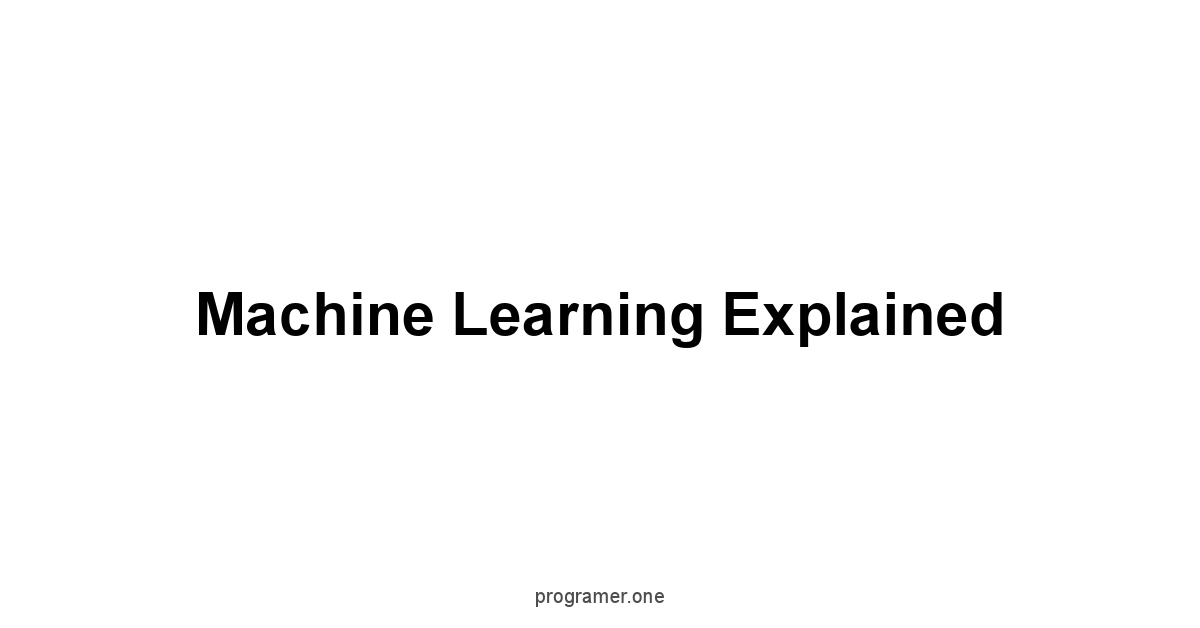
Machine learning is a subset of AI that focuses on enabling machines to learn from data without being explicitly programmed.
It’s a process of training AI models to analyze data, find patterns, and make predictions.
It’s one of the most important components of modern AI and is used in a wide variety of applications.
Machine learning is like teaching a computer how to learn on its own.
Machine learning is the ability to learn and adapt with experience.
It is how machines become “smart”. It does this without explicit programming instructions, instead they learn through algorithms.
This section will explore the different ways in which machine learning works and how these processes are used to power various AI applications. Let’s break down this complex field.
Learning From Data
Learning from data is the core concept of machine learning.
Instead of being explicitly programmed, the machine learns from the patterns and relationships in the data it is provided.
The more data the machine is exposed to, the better it becomes at making accurate predictions.
This is one of the most important advances in computer science.
- The Process of Learning:
- Data Collection: The first step is to gather the raw data. The more diverse the data is, the better the model can learn.
- Data Preparation: Raw data is often messy and needs to be cleaned and preprocessed. This step involves things like removing outliers, filling in missing values, and transforming the data into a format that the machine learning algorithm can use.
- Model Selection: The right model or algorithm for the job is selected. There are many machine learning algorithms to choose from depending on the data type and the task to be performed.
- Model Training: The model is trained using the prepared data. During training, the model learns the patterns and relationships in the data and adjust its internal parameters to minimize errors.
- Model Evaluation: After training, the model is tested using new data to evaluate its performance. The model’s accuracy, precision, and other metrics are evaluated to see how well it has learned.
- Model Refinement: If the model isn’t performing well, the process is refined, which might involve adjusting model parameters, selecting a different model, or gathering more data.
- Model Deployment: Once the model is performing well enough, it can be deployed to use on a real-world application and begin to predict data.
- Key Concepts:
- Features: The individual attributes or properties of the data that the machine learning model uses for predictions.
- Target Variable: The outcome or result that the model is trying to predict.
- Training Data: The data used to teach the model.
- Testing Data: The data used to evaluate the model’s performance.
- Bias and Variance: A balance between bias, where the model is too simple, and variance, where the model is too complex and overfits to the training data.
- Optimization: The process of adjusting the model’s parameters to minimize errors.
- Importance of Data Quality:
- The quality of the data used to train the model has a large effect on the model’s performance.
- Biased data can lead to biased models.
- Data that is too limited will not lead to good results.
- The type and structure of data will determine what type of model can be used.
Learning from data is what makes machine learning so powerful and versatile.
By training the model with large amounts of data, it can make very accurate predictions, leading to a very powerful technology.
This process is the core of almost all modern AI applications.
Supervised Learning
Supervised learning is a type of machine learning where the model is trained using labeled data, meaning that each training example comes with a corresponding desired output.
The goal is to learn a mapping function from the inputs to the outputs, so the model can predict the correct output for new, unseen data.
It’s a very widely used machine learning technique that is very effective for specific tasks.
- How it works:
- Labeled Data: The training data includes inputs and their corresponding correct outputs.
- Training: The model learns from the labeled data by adjusting its internal parameters to minimize the difference between the predicted outputs and the actual outputs.
- Prediction: Once the model is trained, it can be used to predict the output for new, unseen inputs.
- Types of Supervised Learning:
- Classification: The goal is to predict the category or class to which a given input belongs. For example:
- Spam detection: classifying emails as spam or not spam.
- Image recognition: classifying images into predefined categories such as cats, dogs, or cars.
- Medical diagnosis: classifying patients as having a disease or not.
- Regression: The goal is to predict a continuous numerical output. For example:
- House price prediction: predicting the price of a house based on its features.
- Sales forecasting: predicting future sales based on past data.
- Stock price prediction: predicting the price of a stock.
- Classification: The goal is to predict the category or class to which a given input belongs. For example:
- Common Supervised Learning Algorithms:
- Linear Regression: Used for regression tasks to predict continuous numerical outputs.
- Logistic Regression: Used for binary classification tasks where the output is either 0 or 1.
- Support Vector Machines SVM: Used for both classification and regression tasks.
- Decision Trees: Used for both classification and regression tasks, easy to understand but prone to overfitting.
- Random Forests: An ensemble method that combines multiple decision trees to improve accuracy and generalization.
- Neural Networks: Deep learning models used for various tasks, especially complex ones.
- Highly accurate and reliable when trained with good data.
- Well understood and widely used.
- Can be used for a wide range of tasks.
- Requires labeled data which can be expensive and time-consuming to obtain.
- Can be prone to overfitting if not handled correctly.
- Limited to tasks with clear input and output pairs.
Supervised learning is a powerful tool for various AI applications, where the desired outputs are known.
It’s the most commonly used technique in machine learning. It
Final Verdict
From the simple reactive machines that follow pre-set rules to the hypothetical self-aware AI of science fiction, the field encompasses a multitude of concepts and possibilities.
We’ve seen how algorithms, data, and models are the building blocks and how machine learning and deep learning are some of the tools that allow machines to learn and adapt.
It’s a field that has come a long way, full of challenges and successes.
The history of AI is a story of ambition and setbacks. Early optimism gave way to periods of discouragement, the so-called AI winters, but this also led to new insights and the development of better techniques. The resurgence of AI was driven by new technologies like machine learning, big data, and deep learning, and it has led to incredible advancements in many areas. Now we have AI systems that can do things that were unthinkable not that long ago, and they are transforming every aspect of our daily lives. According to a recent report by PWC, AI is projected to add $15.7 trillion to the global economy by 2030, showing how important it will be for the future.
The types of AI, from simple reactive machines to complex self-aware entities, showcase the diversity of the field.
We have the narrow AI systems that are able to perform specific tasks and are very useful, we have the limited memory AI systems that can adapt to new data and are a big step forward, and we have the still hypothetical AI systems that can understand the human mind and even possess self-awareness.
Each of these types of AI offers different capabilities and challenges, each of them is a step in our journey to create machines that can think like we do.
The development of these technologies continues at a rapid pace.
Machine learning, with its focus on learning from data, is the engine that powers modern AI.
Through supervised and unsupervised learning, machines can find patterns, make predictions, and improve over time.
It’s a technology that has the power to transform industries and solve some of humanity’s most pressing problems.
The future of AI is uncertain, but its impact is already being felt.
It’s up to us to understand these technologies and their possibilities, and to make sure we are all ready for the changes they will bring.
Frequently Asked Questions
What exactly is Artificial Intelligence?
AI is about making machines think, learn, and act like humans.
Not just mimicking, but actually processing information and making decisions.
It’s a broad field, aiming to replicate human intelligence in machines.
Is AI one single thing?
No, it’s a spectrum.
From simple programs that follow rules to complex systems that learn and adapt.
It includes machines that can analyze data, solve problems, and understand language.
What does “reasoning” mean in AI?
Reasoning is the ability to analyze information and draw conclusions.
It’s like a detective finding patterns and solutions instead of criminals.
How does AI “learn”?
Learning in AI means improving performance over time through experience.
Machines aren’t just programmed, they adapt and get better with more data.
What are “algorithms” in AI?
Algorithms are sets of rules or procedures that computers follow to solve problems. They’re the recipes of AI.
Why is data so important for AI?
Data is the raw information that AI systems learn from. It’s the fuel that powers the AI engine.
The quality and quantity of data are crucial for AI models.
What are “models” in AI?
Models are mathematical representations of the real world that AI creates.
They are the maps that AI uses to navigate through problems.
What is “machine learning”?
Machine learning is a subset of AI focused on enabling systems to learn from data without being explicitly programmed. It’s how AI adapts and improves.
What’s “deep learning”?
Deep learning is a more advanced type of machine learning that uses neural networks with multiple layers.
It’s very effective for tasks like image recognition and language processing.
Where is AI used in healthcare?
AI is used for diagnosing diseases, personalizing treatments, and developing new drugs.
It can analyze medical images, predict patient risks, and assist with surgeries.
How is AI used in finance?
AI is used for fraud detection, risk assessment, and algorithmic trading.
It can analyze market trends and make investment decisions.
What about transportation, how is AI used there?
AI is used for self-driving cars, optimizing traffic flow, and managing logistics. It can improve road safety and reduce congestion.
How does AI help in manufacturing?
AI is used for predictive maintenance, quality control, and optimizing production processes.
It can identify defects and predict equipment failures.
Is AI used in customer service?
Yes, AI is used for chatbots and virtual assistants that can handle customer inquiries and provide support.
What about AI in entertainment and education?
In entertainment, AI creates personalized content.
In education, it provides personalized learning and feedback.
When did AI start?
The dream of AI goes back to old stories, but it became a real field of study in the 20th century.
What happened at the Dartmouth Workshop in 1956?
That workshop is considered the birth of AI as a field.
Researchers gathered to explore the potential of thinking machines and coined the term “Artificial Intelligence.”
What were the AI winters?
The AI winters were periods when funding and interest in AI research declined, due to lack of progress, after an initial period of optimism.
What caused the AI resurgence?
The resurgence was driven by new techniques like machine learning, the rise of the internet and large datasets, and the development of more powerful computers.
What is reactive AI?
They have no memory and only react to the current situation, following pre-programmed rules.
What is limited memory AI?
Limited memory AI can use past experiences to inform future decisions, storing information and using it to make predictions, unlike reactive AI.
What is Theory of Mind AI?
Theory of Mind AI aims to understand human emotions, beliefs, and intentions, trying to understand the minds of individuals it’s interacting with. It is mostly theoretical currently.
What is self-aware AI?
Self-aware AI is a hypothetical type of AI that possesses consciousness and a sense of self. It’s a concept often found in science fiction.
What is Narrow or Weak AI?
Narrow AI is focused on performing specific tasks, and these systems are designed to do one thing well. They are the most common type of AI today.
What is General or Strong AI?
General AI refers to systems with human-level intelligence, able to perform any intellectual task a human can do. This is still mostly theoretical.
What is Super AI?
Super AI is a hypothetical form of AI that surpasses human intelligence in every way, it’s the most extreme form of intelligence that can be envisioned.
What’s the core idea behind machine learning?
Machine learning enables machines to learn from data without being explicitly programmed.
It’s about training models to find patterns and make predictions.
How does learning from data work?
It involves collecting data, preparing it, selecting a model, training the model with data, evaluating its performance, and refining it.
What is supervised learning?
Supervised learning is a type of machine learning where the model is trained using labeled data, learning a mapping from inputs to outputs.


